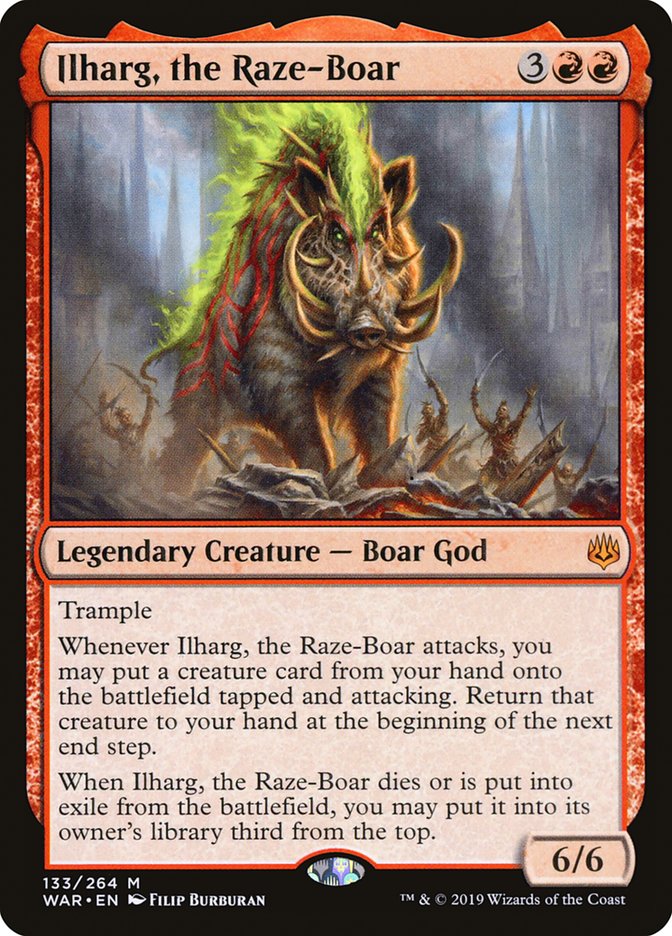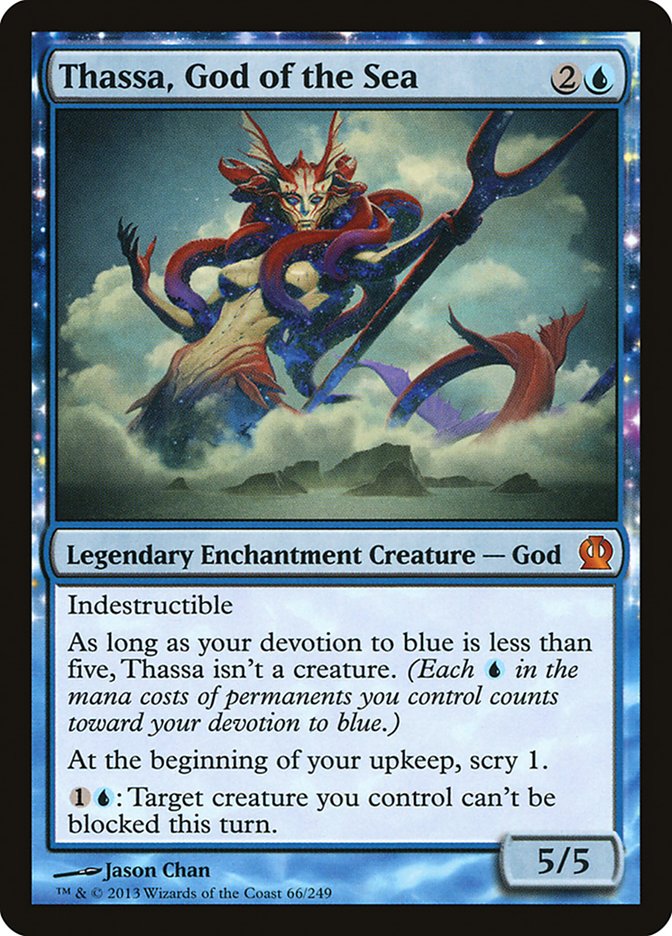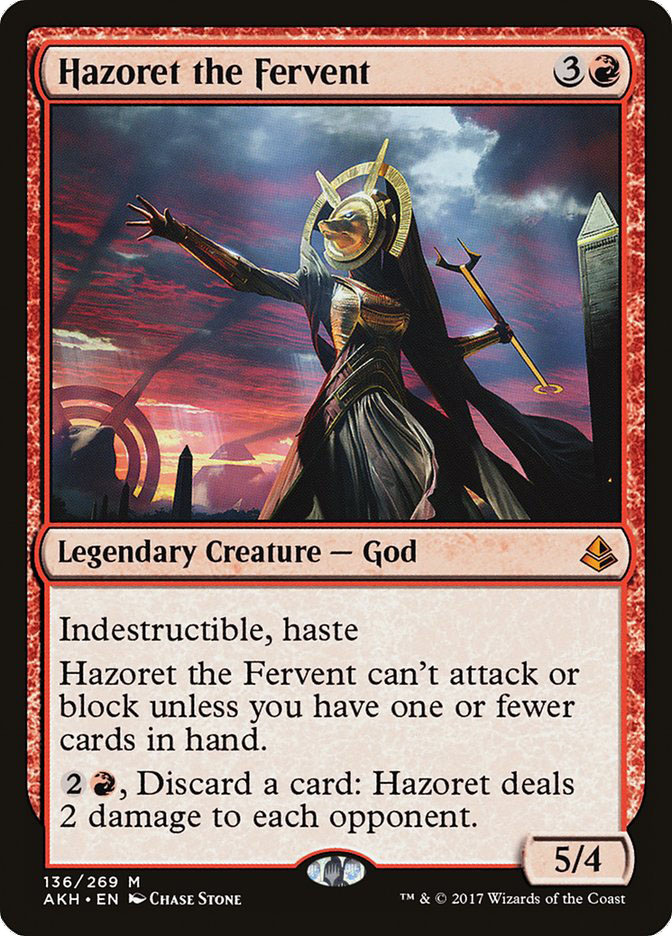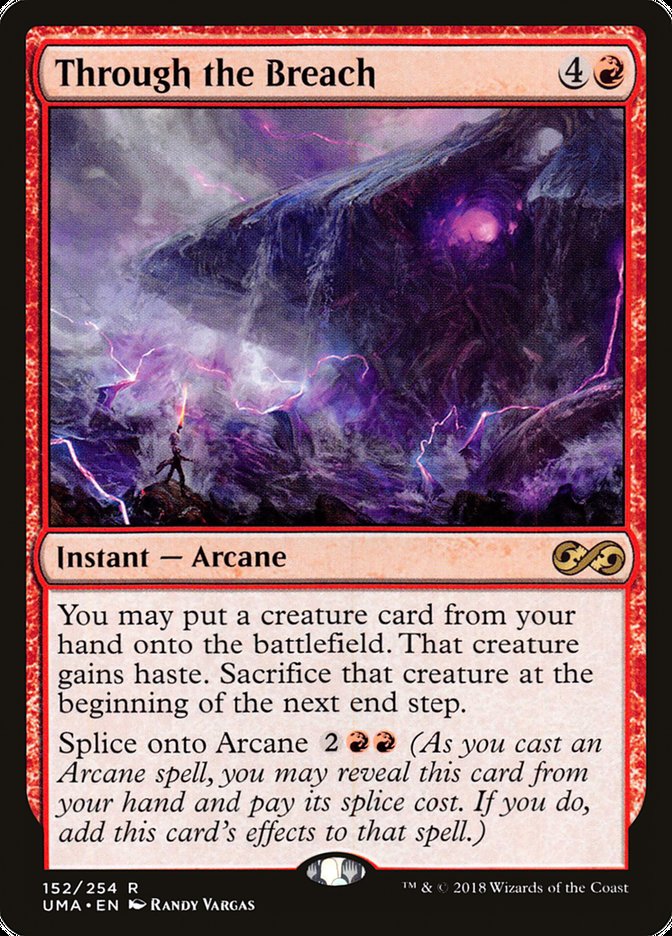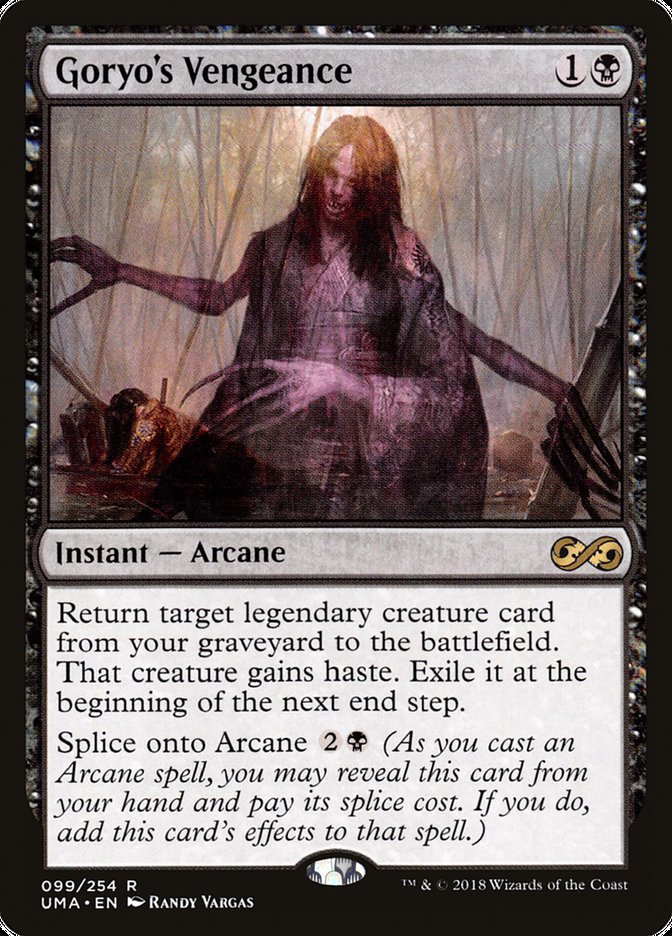War of The Spark preview season has been flush with a variety of new and exciting cards, effects, and abilities. The most interesting aspect in terms of design of the set is the introduction of 37 planeswalkers in one set, as well as the exploration into a very different design space for them by giving them different rarities and static abilities.
This past week, we were introduced to what easily takes the cake for second-most-impactful and interesting mechanic in War of the Spark.
Gods have returned, and today, I’m here to talk to you about the one…
…the only….
…the Boar God…
It seems that the prophesied End-Raze, the time in which Ilharg, the Raze-Boar is storied to lay waste to all of Ravnica, is upon us, as it looks like it will be joining us once War of the Spark releases. This card has as much text on it as it does raw power, so let’s break it down.
On rate, the card is above the curve as a 6/6 for five mana with trample, without looking at any of the other abilities. Typically, midrange red creatures such as this one end up being in a weird spot, as they are powerful on rate but usually don’t find a home in lower-curve red aggressive decks.
Glorybringer was a staple of the previous standard format’s red decks, but the deck could afford to play more lands (usually in the 24 to 25 range) because it also featured many four mana threats like Chandra, Torch of Defiance and the infamous Hazoret the Fervent. It will remain to be seen if a something like a midrange Gruul deck can utilize this card properly, as the current red aggro deck of the format caps out at Experimental Frenzy.
Speaking of Hazoret, it seems that Ilharg will be taking the Fervent’s position in the cycle alongside the other now-God-Eternals that perished during the Hour of Devastation story. Ilharg isn’t coated in lazotep and zombified like the rest, but the unique God ability among the five of them is the same. Let’s examine the ability in depth.
What Is Eternal May Never Die
Our first exposure to Gods in Magic came all the way back in Theros with the introduction of Thassa, Heliod, and friends. The cards featured above rate creatures that required a little bit of work to turn into creatures in the form of the devotion mechanic. More recently, the cycle of Amonkhet Gods changed the game a bit by entering the battlefield but requiring specific criteria to attack or block. In the following set, the Gods that served Nicol Bolas, including The Scarab God, did away with any downside and entered the battlefield, immediately ready to wreak havoc. The clause that caused these Gods to return from graveyard to hand at the end of each turn they entered it made them difficult to beat by destroying them.
Ilharg, the Raze-Boar and the other Gods in the War of the Spark cycle iterate further on the abilities of the Locust/Scarab/Scorpion Gods, making them ultimately immune to any sort of removal. The tradeoff compared to the Hour of Devastation Gods is that they won’t come back down the following turn, as they get tucked down third from the top.
On the balance, this makes the Gods much more difficult to deal with long-term, meaning that players will have to get creative in how they deal with them. Those who played Standard during the time The Scarab God was legal remember how much of a nuisance it was to deal with it without a Vraska’s Contempt or Ixalan’s Binding at the ready. While there’s a space in between the turns these Gods can return to the battlefield after being removed, it seems that, over the course of an extremely long game, they will eventually exhaust any and all removal options from their opponents.
Now, Ilharg in particular doesn’t come with an enters-the-battlefield ability, so it won’t be more than a large brick wall of a creature in the interim. It has to get to attacking before the real party starts, but the ability that triggers reminds me of one of the most degenerate Magic cards to ever see print:
It’s likely that Through the Breach on rate is a much more powerful Magic card, but in the context of Standard, the repeatability of the effect due to the creature that Ilharg drags into the combat phase with it not having to be sacrificed is not insignificant. The ability itself, combined with Ilharg’s practical unkillability, leaves it to be a potentialforce to be reckoned with.
Thinking in terms of just the Standard format, a quest begins to find the best shell and best creatures that Ilharg can sling onto the battlefield tapped and attacking. Ilharg really enjoys that riot mechanic from the last set, as entering the battlefield with the ability to gain haste lets it start brutalizing opponents with other huge creatures the turn it enters the battlefield.
Creatures (26)
- 4 Llanowar Elves
- 1 Ghalta, Primal Hunger
- 4 Rekindling Phoenix
- 4 Nullhide Ferox
- 4 Skarrgan Hellkite
- 4 Incubation Druid
- 4 Ilharg, the Raze-Boar
- 1 God-Eternal Rhonas
Planeswalkers (4)
Lands (24)
Spells (6)

This is a rough draft of a deck that I would like to start off with building around Ilharg. I think that this deck might be a few cards short of ways to have Ilharg gain haste, so I would start any tweaks you may do there. Rhythm of the Wild, in particular, ended up being a dud in Ravnica Allegiance Standard, but Ilharg may be the overwhelming payoff the card was looking for to make it a consideration once more. If not, perhaps Domri, Chaos Bringer, another dud from Ravnica Allegiance Standard, might be the answer. Ultimately, I think a successful shell involving Ilharg will be built with these principles in mind:
- Solid ways to give Ilharg (and the support cast of creatures) haste.
- Finding the best supporting cast of creatures to support Ilharg’s on-attack ability.
- Building a shell that operates well without the need for Ilharg to carry games to victory.
If these checkboxes can get ticked, I think some version of the decklist above has a shot in War of the Spark Standard.
Ilharg, the Raze-Boar has a lot of potential to be a truly degenerate combo piece as we look towards the non-rotating formats, specifically Modern. I likened the God to Through the Breach earlier in the article, and it definitely got the gears turning in my head on some likely absurd but potentially powerful builds in Modern that could utilize Ilharg. Ilharg has the convenience of being a legendary creature, meaning it plays well with one of the most degenerate cards in Modern:
A deck that has seen little sunshine these days in Modern, yet still sees fringe play, is Grishoalbrand. It’s a combo deck that tries to kill the opponent by powering Griselbrand onto the battlefield, drawing most of or all of your deck with the help of Nourishing Shoal to help you gain some life back to keep drawing cards, and culminating in a finishing move of Through the Breach-ing Borborygmos Enraged and throwing a lethal amount of lands at the opponent with his ability. What would a shell involving Ilharg look like?
Creatures (14)
Lands (19)
Spells (27)

The idea of this deck would be to eschew the Borborygmos chunk-your-lands win condition in favor of lots more Ritual effects to power out Ilharg and/or Through the Breach more quickly. I added a couple of Emrakuls into the deck, as, even though the timing restriction on Ilharg’s on-attack ability makes you not get the Annihilator triggers, this build has the potential for much more likely Breach-plus-Emrakul or Goryo-plus-Emrakul shenanigans, making it a sensible inclusion. Perhaps, thanks to Worldspine Wurm having trample, it would be a better fit, as, with Ilharg, you would present 21 points of trample damage at once. But this deck is a rough draft, and it would likely take some time to produce a more optimal shell.
Ilharg, the Raze-Boar has a ton going on and has a lot of potential across multiple formats. How it ends up being utilized, if at all, remains to be seen, but the raw on-rate power level of the card suggests to me that it would be a shocker to see this card fade into obscurity after War of the Spark becomes legal.
The End-Raze is upon us. How will you harness the power of the Boar God?


